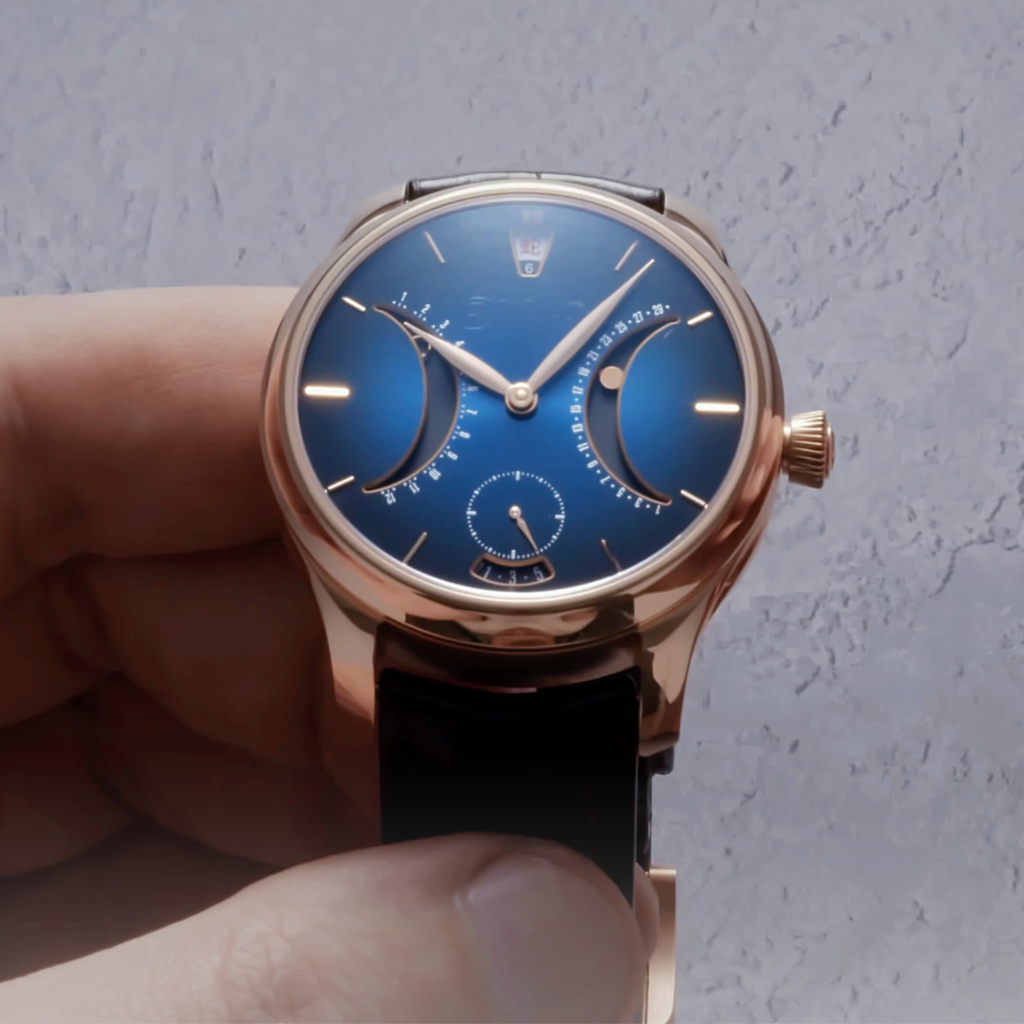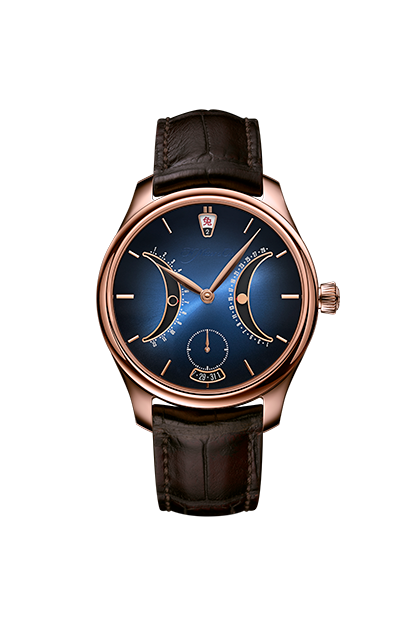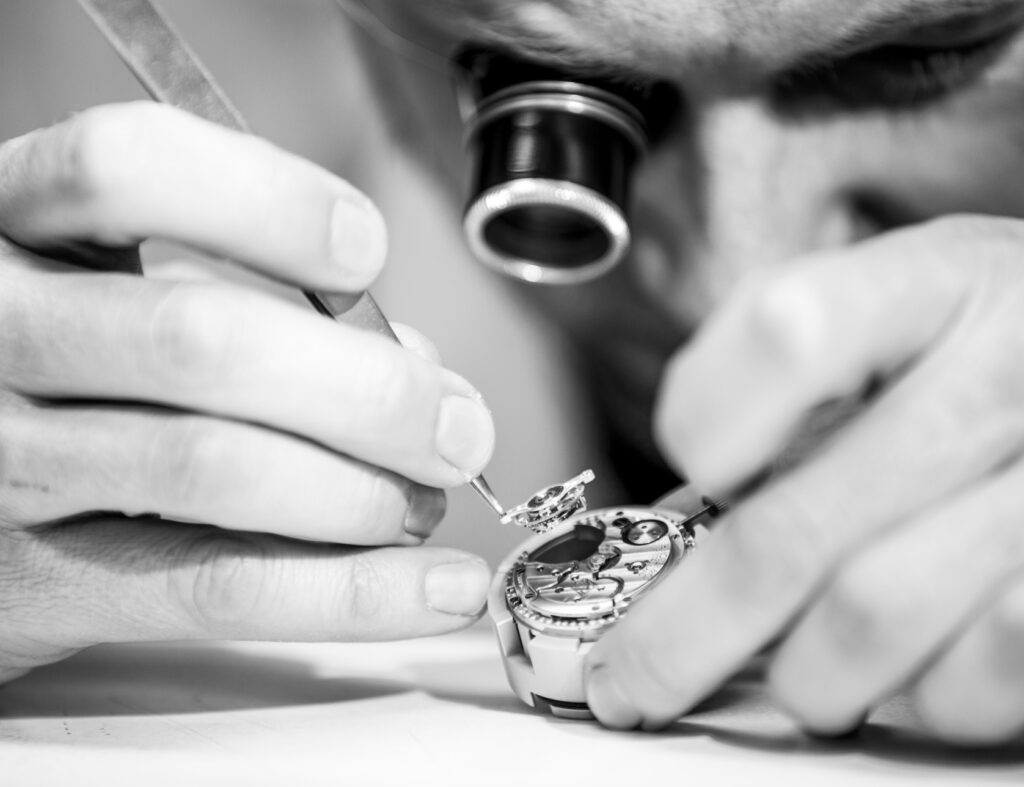The Chinese calendar, explained
Housed within the Endeavour collection, this exotic addition takes H. Moser & Cie.’s most elegant case design to elevate the solving of a problem: in China, not one, but two calendars are used. The first, the Gregorian calendar, is based on the sun and the second, the Chinese, is based on both the sun and the moon.
Both heavenly bodies make sense as the basis of a calendar because they’re natural timekeepers, moving in a reliable, consistent way, allowing us to mark the passing of time. Neither are perfect, however, and so require their individual idiosyncrasies to accommodate the randomness of nature.
Of course, February is a short month with an extra day added every four years during a leap year. But here’s the twist: leap years are skipped every 100 years, and the skipped leap year is skipped every 400 years. This is because the Earth’s orbit and rotation don’t perfectly align with the sun.
The Chinese calendar faces similar but different challenges, and as such yields different solutions. If you’re not familiar, the Chinese calendar comprises 12 months, like the Gregorian calendar—except when it’s thirteen months. With every month 29 or 30 days, the Chinese calendar would drift out of alignment pretty quickly with the Gregorian, and so a 30-day leap month is added every two to three years.
It’s a lunisolar calendar because the months begin with every alignment of the sun and moon, with the first month beginning between late January and early February. To make things even more interesting, the first month isn’t always the same length. It could be either 29 or 30 days. And so this is why you don’t see many—or even any—watches with the Chinese calendar in them. But you know Moser. They’re always up for a challenge.
Juggling the sun and moon
The mechanical complexity isn’t the only problem that needs solving. In fact, it’s not even the main problem that needs solving. A calendar complication as readable as a newspaper at night can be as clever as it likes—but if it doesn’t make clear, obvious sense, it may as well not exist.
So let me take you through the details of this midnight blue fumé dial. We’ll start with something familiar, the Gregorian date at six o’clock, right at the bottom of the dial, below the hacking seconds subdial. Pretty straightforward so far. Then, in the crescent window to the left, a retrograde lunar months display, tracking all 12 lunar months.
On the right, there’s another crescent retrograde display that reads not only the lunar day, but also the phase of the moon, which sneaks in behind the dial either side of the full moon that marks the middle of the month. Then, right up top you get the zodiac symbol for the relevant year.
Now, what about that extra thirteenth month every two to three years? That’s the toughest challenge. It’s like the leap year, a bit untameable. But H. Moser & Cie. have overcome this hurdle with an additional display right beneath the year indicator. It tells you when there’s an extra month in that year. But that extra month doesn’t always come in at the same place every year. It can be inserted anywhere from the second to the eleventh month, and then gets the same number of days as the previous month. So the embolismic month, as it’s known, is displayed with the number of the month it’s inserted into right below the year.
If that wasn’t clever enough, what’s most fundamentally impressive about this watch is that, while a perpetual calendar operates on a four-year loop, the Endeavour Chinese Calendar has to keep count all the way up to 12 years, because of the zodiac cycle. That means this watch only needs adjusting once every 12 years, which is incredible considering it’s juggling two calendars, the sun and the moon.
A modern classic
Since the Chinese calendar is situated within the Endeavour collection, it also gets the very classically executed calibre 200-based HMC 210. Where sportier Mosers feature skeletonised bridges and grey colouration, the 210 enjoys classic decoration, but with an H. Moser & Cie. twist. The double striping is a subtle but unique detail, along with the sweeping bridge suspending the balance wheel, whilst the solid gold rotor keeps the watch wound automatically for a total 72 hours of power reserve. The HMC 210 is situated within a 40mm red gold case on an alligator strap with a matching red gold deployant clasp.
A truly innovative timepiece
Modern watchmaking isn’t just about preserving the past, it’s also about finding innovative new solutions to problems that haven’t been solved yet. For over a billion people, the importance of aligning the Gregorian and Chinese calendars, the sun and the moon, is a crucial aspect of culture and heritage, defining belief and identity. For everyone else, it’s also a really cool, clever watch. And really, it begs the question: why wear something boring when you could be wearing this instead?







